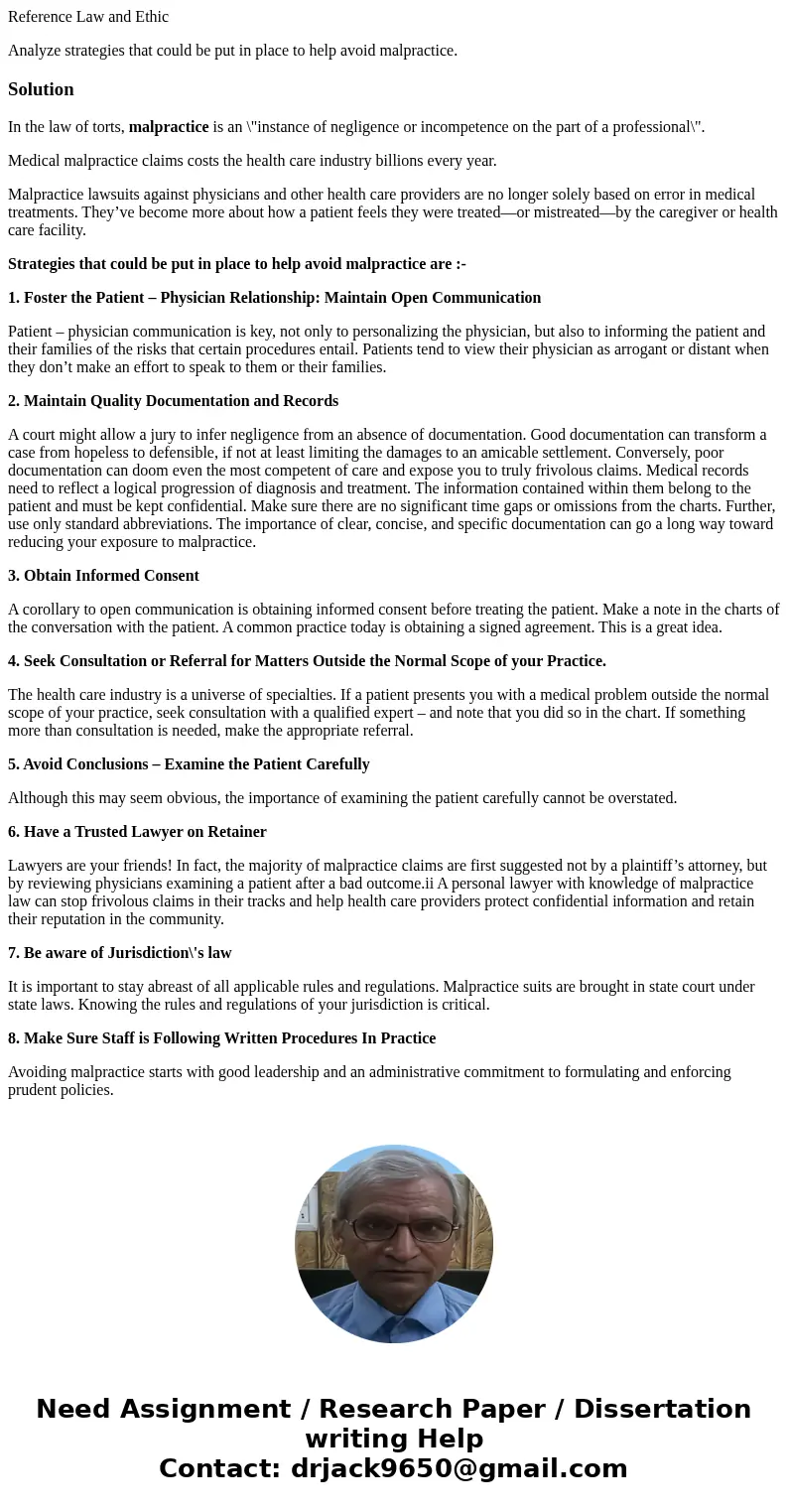Reference Law and Ethic Analyze strategies that could be put
Reference Law and Ethic
Analyze strategies that could be put in place to help avoid malpractice.
Solution
In the law of torts, malpractice is an \"instance of negligence or incompetence on the part of a professional\".
Medical malpractice claims costs the health care industry billions every year.
Malpractice lawsuits against physicians and other health care providers are no longer solely based on error in medical treatments. They’ve become more about how a patient feels they were treated—or mistreated—by the caregiver or health care facility.
Strategies that could be put in place to help avoid malpractice are :-
1. Foster the Patient – Physician Relationship: Maintain Open Communication
Patient – physician communication is key, not only to personalizing the physician, but also to informing the patient and their families of the risks that certain procedures entail. Patients tend to view their physician as arrogant or distant when they don’t make an effort to speak to them or their families.
2. Maintain Quality Documentation and Records
A court might allow a jury to infer negligence from an absence of documentation. Good documentation can transform a case from hopeless to defensible, if not at least limiting the damages to an amicable settlement. Conversely, poor documentation can doom even the most competent of care and expose you to truly frivolous claims. Medical records need to reflect a logical progression of diagnosis and treatment. The information contained within them belong to the patient and must be kept confidential. Make sure there are no significant time gaps or omissions from the charts. Further, use only standard abbreviations. The importance of clear, concise, and specific documentation can go a long way toward reducing your exposure to malpractice.
3. Obtain Informed Consent
A corollary to open communication is obtaining informed consent before treating the patient. Make a note in the charts of the conversation with the patient. A common practice today is obtaining a signed agreement. This is a great idea.
4. Seek Consultation or Referral for Matters Outside the Normal Scope of your Practice.
The health care industry is a universe of specialties. If a patient presents you with a medical problem outside the normal scope of your practice, seek consultation with a qualified expert – and note that you did so in the chart. If something more than consultation is needed, make the appropriate referral.
5. Avoid Conclusions – Examine the Patient Carefully
Although this may seem obvious, the importance of examining the patient carefully cannot be overstated.
6. Have a Trusted Lawyer on Retainer
Lawyers are your friends! In fact, the majority of malpractice claims are first suggested not by a plaintiff’s attorney, but by reviewing physicians examining a patient after a bad outcome.ii A personal lawyer with knowledge of malpractice law can stop frivolous claims in their tracks and help health care providers protect confidential information and retain their reputation in the community.
7. Be aware of Jurisdiction\'s law
It is important to stay abreast of all applicable rules and regulations. Malpractice suits are brought in state court under state laws. Knowing the rules and regulations of your jurisdiction is critical.
8. Make Sure Staff is Following Written Procedures In Practice
Avoiding malpractice starts with good leadership and an administrative commitment to formulating and enforcing prudent policies.

 Homework Sourse
Homework Sourse